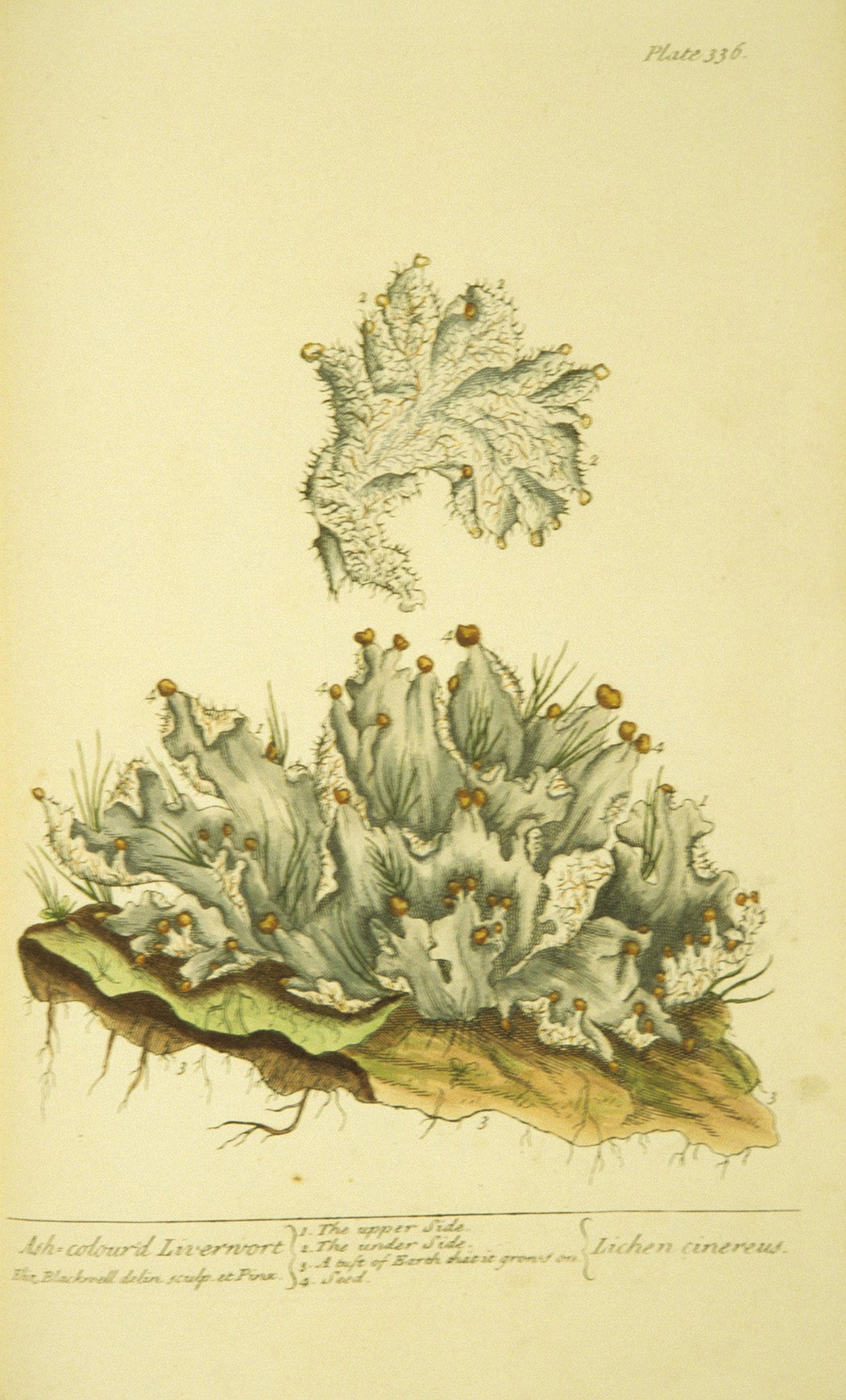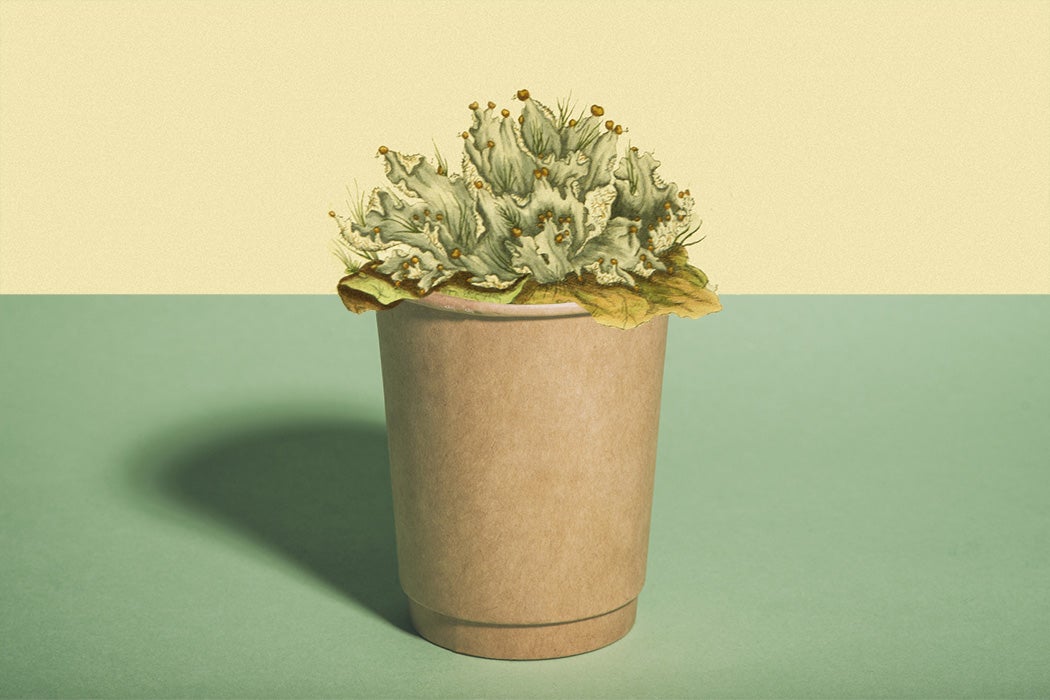Lichen, the life form composed by the symbiosis of algae and fungi, can be tough to get excited about. Their splotchy or craggy forms look almost alien—indeed, lichen (and their common residents, like tardigrades) have been known to survive vacuum conditions similar to outer space. But a few centuries ago, lichen were welcome medicaments in the ancient and early modern apothecary.

Evocative illustrations like Elizabeth Blackwell’s make the category-defying specimens somewhat more intriguing. In a plate from A Curious Herbal (1737)—published under curious circumstances—an “Ash-colour’d Liverwort” invitingly sprouts from a scrap of wood. Blackwell depicts the gray-green forms of the lichen (known as “thalli”) in dramatic, almost-obscene detail, capturing the ribbony edges of the thalli and fine hair-like fibers coating the underside. The plate shows what is now known botanically as Peltigera canina, or dog lichen, perhaps due to its reputation as “a Specific for the cure of the Bite of a mad Dog.”
Citing the “great Doctor Mead,” Blackwell provides a recipe for a powder of ground lichen and black pepper to cure the effects of a bite. The powder is divided into four doses, “one of which must be taken every morning, fasting, for four mornings, successively, in half a pint of cow’s milk warm.” After the course of lichen lattes, the patient must then follow a regimented bathing schedule for over a month, during which they “must be dipt all over; but not stay in (with is head above water) longer than half a minute, if the water be very cold.”

Blackwell’s contemporaries didn’t stop at beverages of lichen and bath regimens to extract the plant’s medicinal value. In a treatise entirely dedicated to the medicinal uses of “Lichen islandicus” (now known as Cetraria islandica), the physician J. B. Regnault boasted that “we have made…creams, pastils, jellies, biscuits, and gruel” of the lichen, and reported that “of all the different methods which we have employed in preparing the Lichen for diet, chocolate holds the first rank.”
Weekly Newsletter
What precipitated Regnault’s treatise-long enthusiasm for lichen? Like many early modern physicians, Regnault found himself scrambling to find treatments for the devastating disease of pulmonary consumption. “All practitioners agree that a great point in the cure of pulmonary Phthisis [consumption], is to produce a harmony in all the different parts of the system,” he explains. “The choice and regulation of the quantity of mild and gelatinous diet, are powerful means of attaining this end,” and lichen—the tough foliage of which becomes mucilaginous when brewed, steeped, or otherwise prepared, proved eminently useful when “employed as a medicinal nourishment [to] fulfill this indication.” Regnault and his colleagues also found it “an efficacious remedy in consumption, cough, diarrhea, and dysentery.”
As odd as Regnault and Blackwell’s preparations of lichen may sound to modern sensibilities, lichen still appears in our alimentary routines. According to the authors of Urban Lichens: A Field Guide for Northeastern North America, “usnic acid harvested from lichens is often used as an ingredient in all-natural toothpaste and deodorant” for its antimicrobial properties. But DIY apothecary beware: the compound can be toxic in higher doses, and lichens sequester pollutants like heavy metals from the air that could reappear in homemade brews. Better, perhaps, to appreciate the versatility of lichens from a relative distance.
Support JSTOR Daily! Join our new membership program on Patreon today.







